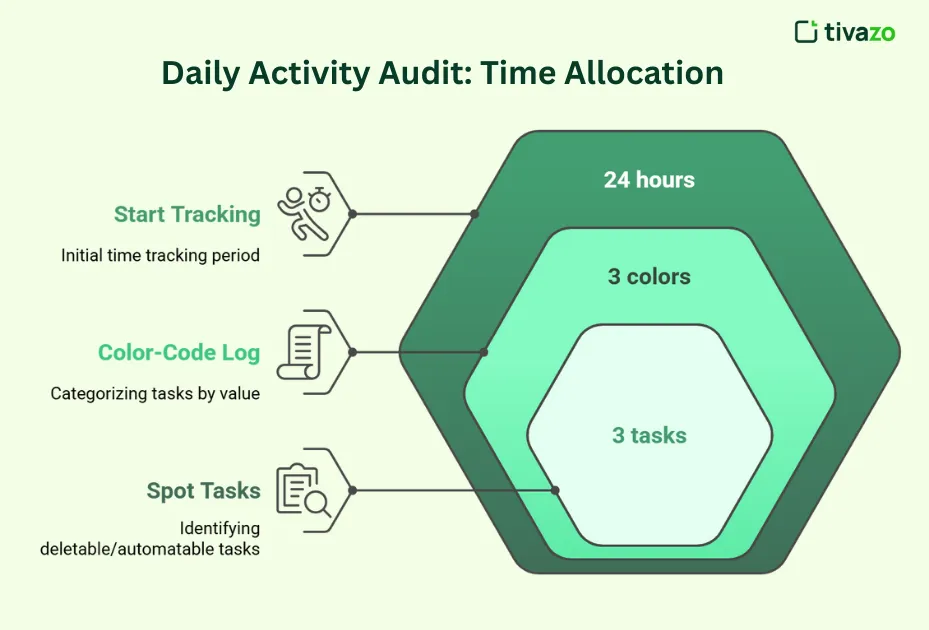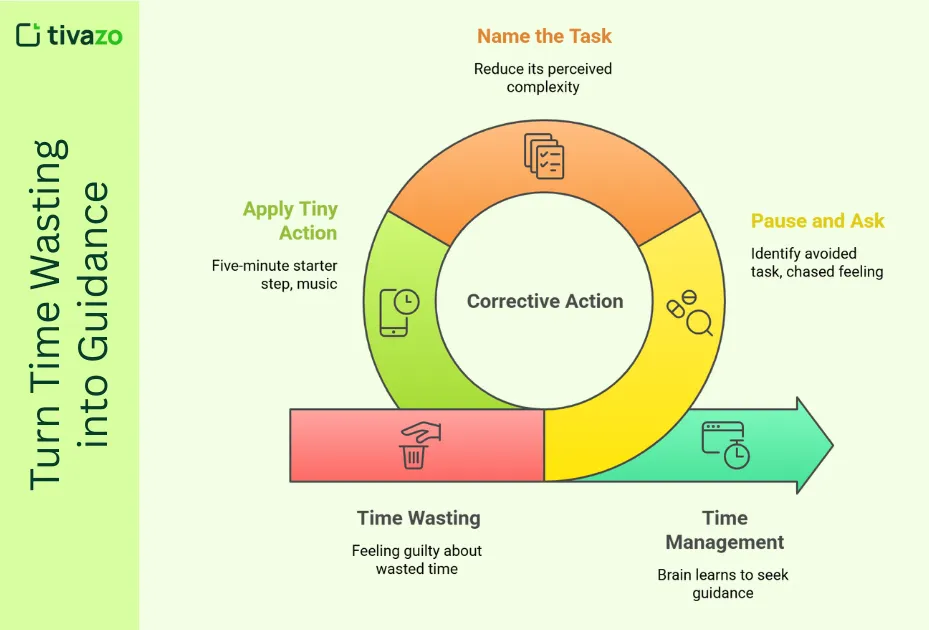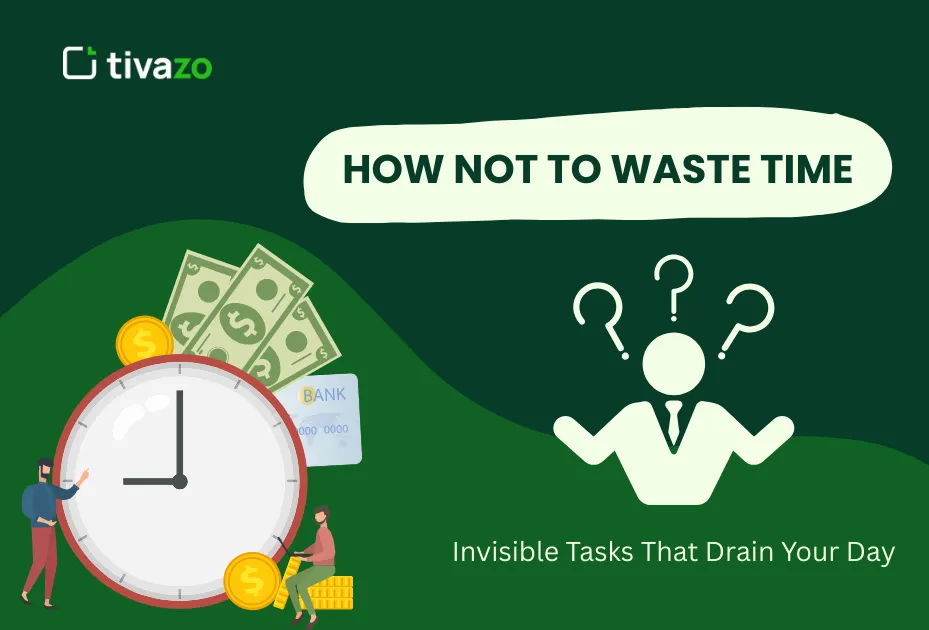Everyone has experienced sitting down to work, only to wonder where the morning went. The answer often hides in invisible tasks—tiny chores, micro-decisions, and background obligations that quietly eat minutes until hours vanish. Learning how not to waste time starts with seeing those sneaky drains. Before diving in, imagine a student who suddenly remembers a class presentation due tomorrow.
A quick search for help leads to do my powerpoint presentation for me, and in seconds, the problem is off my plate. That same clarity can be applied to countless everyday moments. This article explores the spots where wasting time hides, why the brain misses them, and simple ways to remove or automate them.
By the end, readers will spot each silent thief, plug the leaks, and reclaim big blocks of focus. Goodbye to the nagging thought, “Why am I always wasting time?” Hello to purposeful days and evenings that still hold energy for what matters.
What Makes a Task Invisible?
Invisible tasks are not magical; they are simply chores that feel too small to name. Because they finish quickly, the brain marks them as harmless. Checking a weather app, scrolling through two comments, rearranging desktop icons—each action seems lighter than air. Yet together they balloon into large blocks of lost hours. Psychologists call this the “aggregation effect.”
When an item takes less than two minutes, most people skip the mental step of scheduling it, so the duty slips through planning cracks. Worse, the reward loop of finishing something tiny pumps a shot of dopamine, encouraging more micro chores. People think they are being productive, but they are actually wasting precious attention.
That is why many reach five o’clock and ask, “Where did the day go?” Recognizing this mislabeling is the first step toward learning how not to waste time. By labeling and timing these mini duties, the hidden becomes obvious, and change can finally begin.
Recognizing Personal Triggers
Everyone has a unique set of cues that nudge them toward distraction. For one person, it is a phone buzz announcing a group chat. For another, it is the sight of an open email tab. These triggers pull attention away before the conscious mind can say no.
To stop wasting time, start by mapping out where focus slips. Spend one day carrying a small notebook or keeping a digital log. Each time the flow breaks, jot down what was happening, what emotion appeared, and what task followed. Patterns will surface quickly: boredom at routine data entry, anxiety after an unclear comment from a manager, or hunger near noon.
Once the triggers are visible, they can be handled. A user might silence non-urgent chats, close extra tabs, or block social sites until lunch. This personal map turns vague feelings into clear rules. When temptations arise again, the brain will recognize them early and steer work back on track.
The Cost of Micro-Decisions
Every choice, no matter how tiny, burns mental fuel. Opening a snack drawer, choosing a playlist, or deciding which unread email to open first feels harmless, yet each decision drains a bit of willpower. Neuroscientists label this phenomenon “decision fatigue.” When the tank runs low, productivity drops and careless errors climb.
A classic study showed judges granting fewer paroles late in the day, proving that the human brain tires of deciding. In an office or home setting, decision fatigue leads directly to wasting time since the mind seeks easy, often less valuable tasks. The fix is to batch and automate. Plan meals for the week, set default folders for incoming files, or create a morning ritual that selects clothing automatically.
By reducing micro-decisions, brainpower is saved for work that truly matters. The stored energy can then be deployed on creative challenges instead of on whether to answer an email now or later.
Practical Audit: A One-Day Experiment
The fastest way to uncover time drains is to run a focused, one-day audit. Pick an ordinary workday and commit to tracking every activity from waking up to bedtime. Use a timer on the phone or a simple spreadsheet. Record start and end times plus a short label. The goal is not to judge but to observe. After twenty-four hours, color-code the log:

- Green for deep, value-adding work
- Yellow for necessary support tasks, like filing or cooking
- Red for wasting or idle moments
When the colors spread across the page, patterns emerge. Maybe meetings creep into green areas, or scrolling fills long red bars after lunch. Totals often shock people; a casual glance can show two or three hours lost to small interruptions. This experiment also builds awareness. Knowing the clock is running nudges better choices throughout the day. By the evening review, users normally spot at least three invisible tasks they can delete, delegate, or automate immediately.
Setting Up Guardrails for Focus
- Time Blocking: You can make your day consist of fixed segments devoted to certain themes (e.g., writing, meetings). Turn messages off in between blocks.
- Reverse Two-Minute Rule: If you have tasks that are quick, do not do them right now, but write them down on a list and plan to do them later, in order to avoid being distracted.
- Physical Cues:
- Switch your phone to grayscale to limit your temptations.
- Have water and snacks around so that you do not have to stop unnecessarily.
- Mini Reviews: At the end of each time block, give yourself a brief evaluation, in the form of a question: Did I stay inside the rails? Make changes to tomorrow’s plan when necessary.
- Develop a Habit: These guardrails will become instinctive, reminding you to keep focused and not to fall into the pit of distractions.
Tools That Minimize Silent Drains
Here’s your text arranged into clear bullet points without changing the wording:
- Technology often causes distraction, yet the right tools can do the opposite.
- Website blockers like Freedom or Cold Turkey schedule internet breaks in advance, closing off tempting sites during focus windows.
- Automatic text expanders insert common phrases with short codes, saving minutes that stack into hours.
- Task managers with keyboard shortcuts reduce the friction of capturing ideas so they don’t swirl in working memory.
- Even a humble kitchen timer set to twenty-five minutes—the classic Pomodoro Technique— provides an audible reminder to stay on track.
- When selecting apps or devices, simplicity matters. A tool with too many features becomes another invisible task as users tweak settings.
- Test one solution at a time for a full week.
- Measure whether total deep-work minutes rise. If they do, keep the tool; if not, uninstall and move on.
- The point is to create an environment where wasting time requires conscious effort, while productive flow becomes the default experience.
Turning Routine Into Ritual
Routines are sequences of actions; rituals are routines with meaning. Turning a bland checklist into a ritual adds motivation and reduces friction. Consider the morning startup. If it begins with a brief stretch, a glass of water, and three stated intentions, the brain receives a clear signal that work mode is ON. The same applies to shutdown.
Writing a short summary, cleaning the desk, and closing the laptop with both hands frame the end of duty. Rituals limit the gray zones where time leaks. There is less chance of drifting into social feeds between tasks because each transition is marked. Over time, these cues become automatic. Athletes tie their shoes the same way before a game; professionals can mimic that certainty.
When a ritual starts, the mind stops asking what to do next, preventing the familiar slide into “just a quick check” that ends up wasting half an hour. A day filled with meaningful rituals leaves evenings open for rest or play.
When “I Waste Time” Becomes a Signal

- Many people scold themselves with the phrase, “I waste time,” without realizing it can be a helpful alarm bell.
- Instead of guilt, treat the statement as data.
- The moment the thought appears, pause and ask two questions:
- What activity am I trying to avoid?
- What feeling am I chasing?
- Often, the answer is fear of a complex task or craving a quick hit of entertainment.
- Naming the avoided task reduces its power; naming the feeling clarifies the need behind the distraction.
- Next, apply a tiny corrective action:
- If the avoided task is large, break it into a five-minute starter step.
- If the feeling is boredom, play instrumental music that energizes without stealing focus.
- Over repeated practice, the brain learns that the phrase “I waste time” actually means “I need guidance.”
This reframing turns self-criticism into a steering wheel that gently points back to purposeful work rather than spinning into unproductive loops.
A Simple Action Plan to Stop Wasting Time

Putting the lessons together creates a straightforward roadmap:
- Notice the invisible tasks through a one-day audit.
- List personal triggers and remove or mute them.
- Batch small chores and automate where possible.
- Install guardrails such as time blocks and website blockers.
- Transform routine into a motivating ritual.
Each step builds on the last, turning vague intentions into concrete behaviors. Practice is key. Commit to the plan for one week, then review the log. Look for gains in deep-work hours and reductions in red, idle minutes. Celebrate the wins; they fuel continued progress. Remember that learning how not to waste time is not about perfection. Some days will slip, and that is fine.
Use the slip as feedback, tighten a guardrail, or tweak a ritual. Over months, these small adjustments compound. Soon, invisible tasks lose their camouflage, and whole mornings reappear on the calendar. With clarity of purpose and a toolkit in place, every reader can choose how to spend hours instead of wondering where they went.



